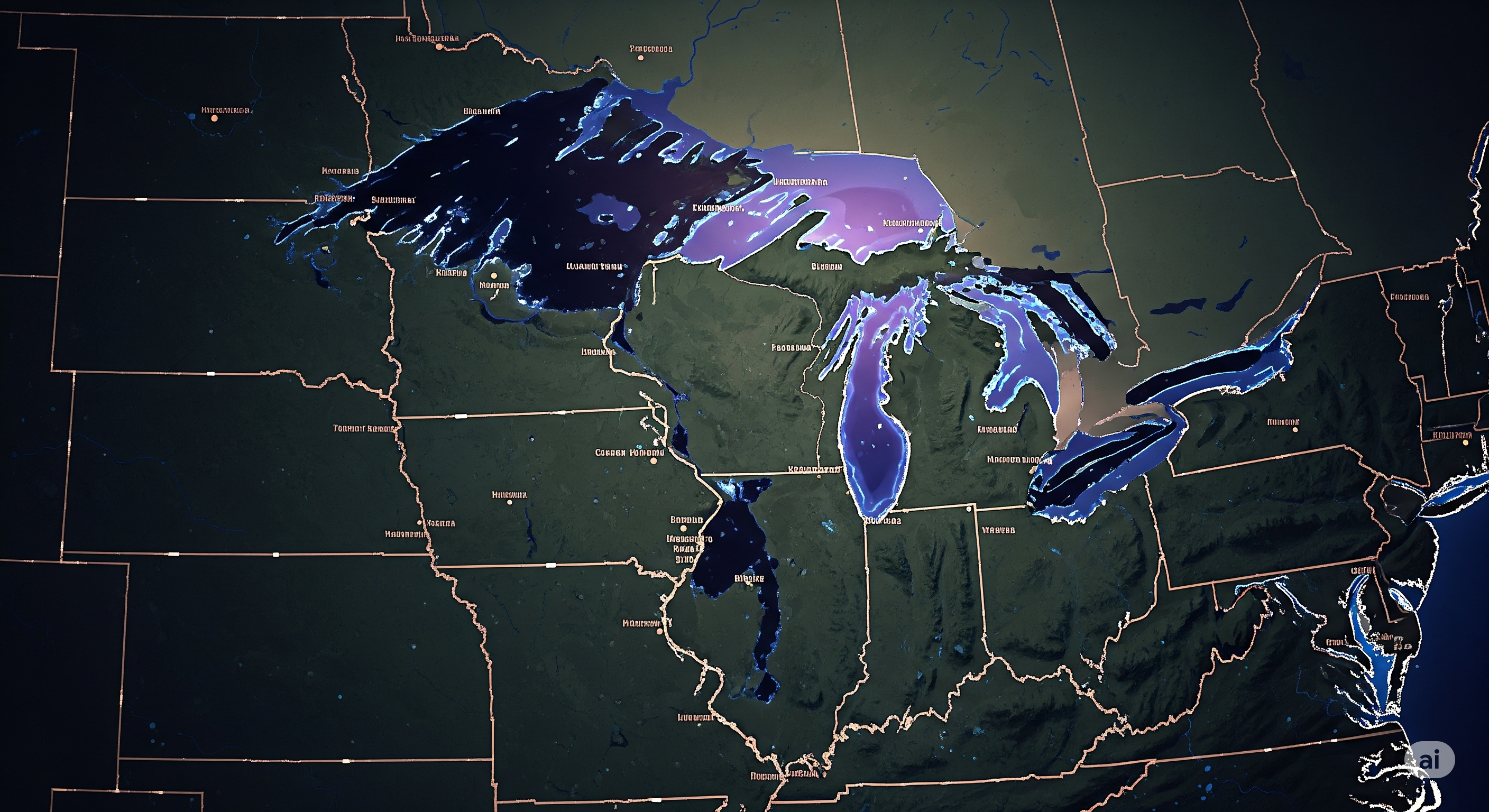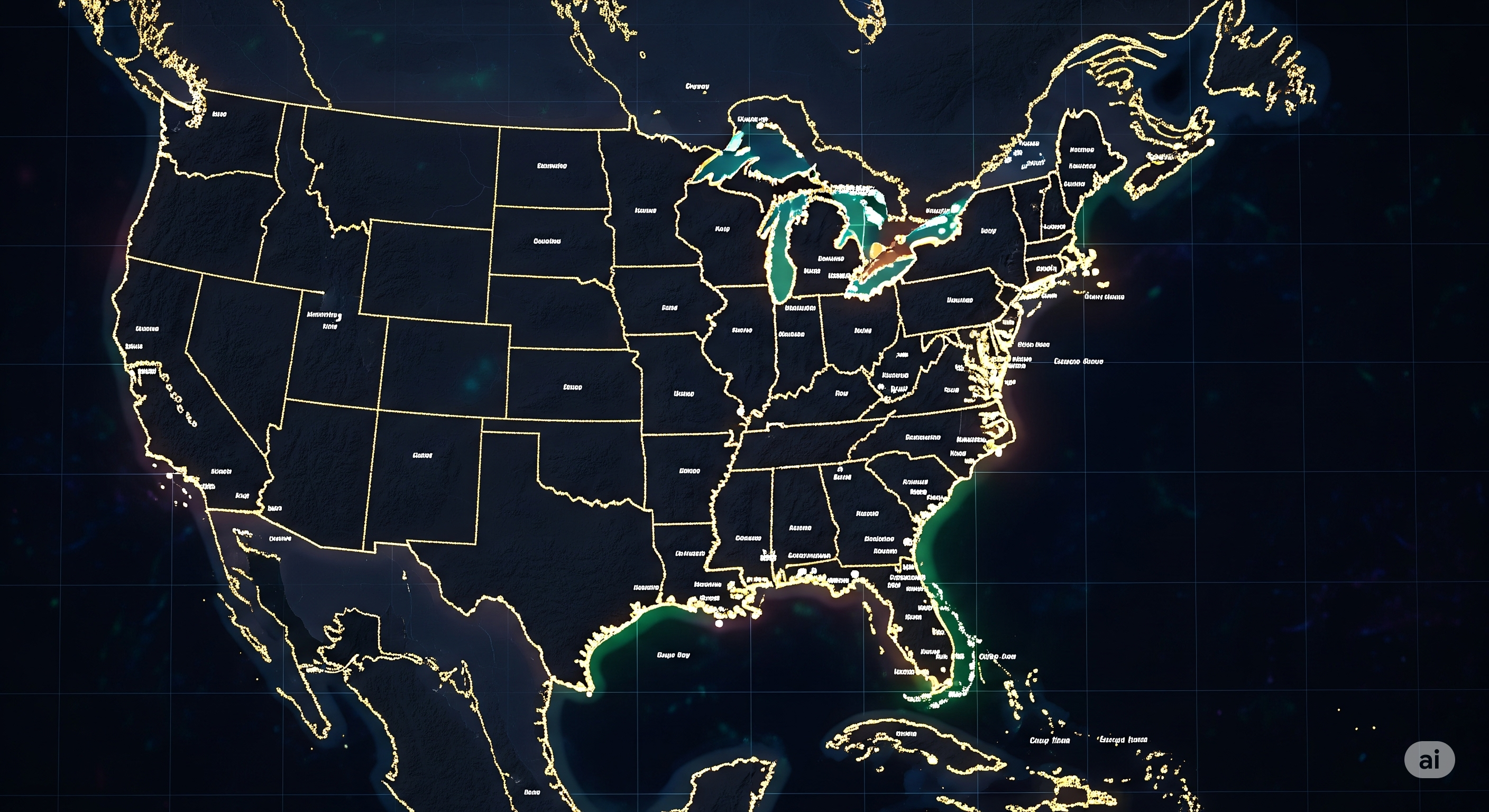Introduction
The Great Lakes region of the United States is one of the most geographically and economically important areas in North America. Comprising five interconnected freshwater lakes—Superior, Michigan, Huron, Erie, and Ontario—this system represents the largest group of freshwater lakes in the world by total area. Collectively, they contain about 20% of the world’s fresh surface water and serve as a critical resource for drinking water, transportation, agriculture, trade, industry, and recreation.
The Great Lakes not only influence the climate, ecosystems, and settlement patterns of the surrounding region but also play a pivotal role in the economic growth of the United States and Canada. However, despite their immense benefits, the Great Lakes face numerous challenges, including pollution, invasive species, over-extraction of water, and climate change impacts.
This article explores the geographic significance, trade importance, and environmental challenges of the Great Lakes in detail.
1. Geographic Overview of the Great Lakes
Composition
- Lake Superior – Largest by surface area, cold and deep.
- Lake Michigan – The only Great Lake entirely within the U.S.
- Lake Huron – Known for its long shoreline with many islands.
- Lake Erie – Shallowest, most biologically productive.
- Lake Ontario – Easternmost, connected to the Atlantic Ocean via the St. Lawrence River.
Physical Significance
- Cover an area of 244,000 km² (94,250 sq. miles).
- Stretch across eight U.S. states: Minnesota, Wisconsin, Illinois, Indiana, Michigan, Ohio, Pennsylvania, and New York.
- Connect to the St. Lawrence Seaway, providing access to the Atlantic Ocean.
2. Significance of the Great Lakes Region
The Great Lakes region is vital not only for the U.S. but also for the global economy. Its significance can be seen in multiple aspects:
a) Source of Freshwater
- Provide drinking water to 40 million people in the U.S. and Canada.
- Support municipal, agricultural, and industrial uses.
b) Agricultural Importance
- Fertile soil in the region supports crops like corn, soybeans, wheat, and fruits.
- Irrigation from lakes boosts food production.
c) Industrial & Urban Growth
- Cities like Chicago, Detroit, Cleveland, and Buffalo developed around the Great Lakes.
- Heavy industries—steel, automobiles, and manufacturing—grew due to access to water transport and energy resources.
d) Transportation and Connectivity
- The Great Lakes are linked to the St. Lawrence Seaway, allowing ships to travel between the Midwest and the Atlantic Ocean.
- This reduces transportation costs and enhances trade efficiency.
e) Biodiversity & Ecosystems
- Support diverse aquatic ecosystems, fisheries, and wetlands.
- Provide habitats for numerous migratory bird species.
f) Tourism and Recreation
- Lakeshore activities such as boating, fishing, and beaches attract millions of tourists annually.
- Contribute billions of dollars to local economies.
3. Trade and Economic Role of the Great Lakes
The Great Lakes are often referred to as a “continental highway” for trade due to their strategic importance in shipping and commerce.
a) The Great Lakes–St. Lawrence Seaway System
- Extends 3,700 km (2,300 miles) from the Atlantic Ocean to the Great Lakes.
- Ships carry over 200 million tons of cargo annually, including iron ore, coal, steel, grain, and petroleum.
b) Role in U.S. and Global Trade
- Industrial Transport
- The region is the backbone of U.S. steel and automotive industries.
- Iron ore from Minnesota and coal from Appalachia are transported through the lakes to manufacturing hubs.
- Agricultural Trade
- Grain from Midwest states is shipped through Lake Erie and Lake Ontario to global markets.
- Grain from Midwest states is shipped through Lake Erie and Lake Ontario to global markets.
- Energy Resources
- Petroleum products and natural gas are transported via ports and pipelines connected to the lakes.
- Petroleum products and natural gas are transported via ports and pipelines connected to the lakes.
- Ports and Shipping Hubs
- Major U.S. ports: Chicago, Duluth, Detroit, Cleveland, Toledo, and Buffalo.
- These ports connect inland industries with international markets.
c) Economic Contribution
- Supports more than 1.5 million jobs in shipping, trade, tourism, and related industries.
- Contributes over $60 billion annually to the U.S. economy.
4. Environmental Challenges Facing the Great Lakes
Despite their economic and ecological importance, the Great Lakes face growing environmental challenges.
a) Pollution
- Industrial Waste: The 20th century saw heavy dumping of pollutants, especially near cities like Detroit and Cleveland.
- Agricultural Runoff: Fertilizers and pesticides enter the lakes, causing algal blooms.
- Plastic Pollution: Microplastics threaten aquatic ecosystems.
b) Invasive Species
- Sea Lamprey and Zebra Mussels entered through shipping routes.
- These species disrupt native fish populations and damage infrastructure.
c) Overfishing & Decline of Native Species
- Commercial overfishing reduced populations of native fish like lake trout.
d) Water Level Fluctuations
- Climate change has increased droughts and floods, leading to unstable water levels.
- Impacts shoreline communities and industries.
e) Climate Change Impacts
- Warmer waters affect fish habitats.
- Increased frequency of storms erodes coastlines.
- Melting ice reduces seasonal water storage.
f) Urban and Industrial Pressure
- Urbanization along shorelines increases wastewater discharge.
- Expanding cities like Chicago and Detroit put stress on water resources.
5. Conservation and Management Efforts
a) U.S.–Canada Cooperation
- Great Lakes Water Quality Agreement (1972, updated 2012) aims to restore and protect water quality.
- Joint initiatives address pollution and invasive species.
b) Government Programs
- Great Lakes Restoration Initiative (GLRI) funds projects on habitat restoration, pollution cleanup, and invasive species control.
- Clean Water Act (1972) regulates discharges into U.S. waters.
c) Local & Community Actions
- Nonprofit organizations and local communities engage in shoreline cleanups, habitat protection, and sustainable tourism.
d) Technological Solutions
- Ballast water treatment in ships reduces invasive species.
- Advanced wastewater treatment plants improve water quality.
6. Case Studies
a) Lake Erie Algal Blooms
- Excess phosphorus from fertilizers causes harmful algal blooms.
- In 2014, Toledo, Ohio, faced a drinking water crisis due to contamination.
b) Revival of Lake Ontario’s Shoreline
- Conservation efforts restored wetlands and improved biodiversity.
c) Chicago River Reversal (1900)
- Engineers reversed the flow of the Chicago River to protect Lake Michigan from sewage contamination—an iconic water management example.
7. The Future of the Great Lakes
Looking ahead, the Great Lakes will continue to play a critical role in the U.S. economy, trade, and environment. However, sustainable management is essential. Key priorities include:
- Reducing pollution and nutrient runoff.
- Controlling invasive species through strict shipping regulations.
- Adapting to climate change by strengthening coastal resilience.
- Promoting sustainable trade and shipping practices.
- Enhancing U.S.–Canada cooperation in water resource management.
Conclusion
The Great Lakes region of the USA is a hub of geography, economy, and ecology. Its freshwater reserves, fertile lands, trade routes, and cultural heritage make it indispensable to the United States. The region supports millions of people, industries, and ecosystems, linking America’s heartland with the global economy.
At the same time, the lakes face mounting environmental challenges such as pollution, invasive species, and climate change. Balancing economic development with ecological protection is the way forward to ensure that the Great Lakes continue to sustain future generations.
In essence, the Great Lakes are not just bodies of water—they are a symbol of America’s natural wealth, economic power, and environmental responsibility.




